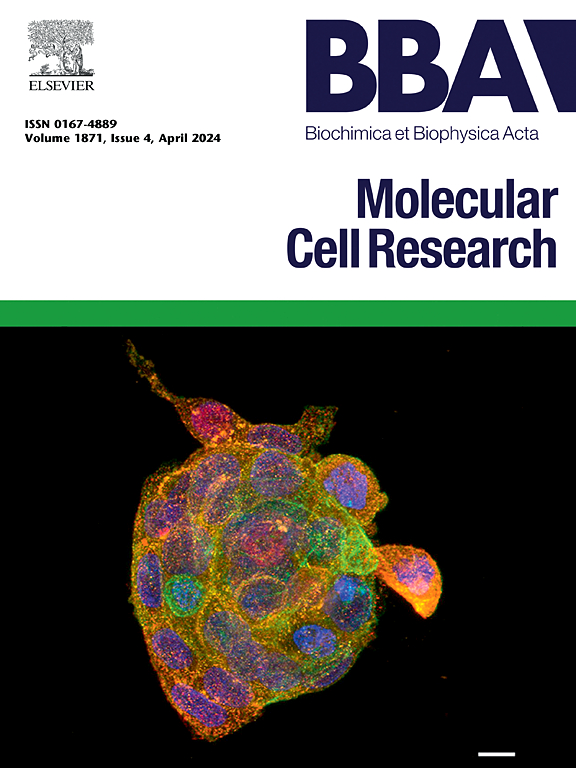S-phase kinase-associated protein 1 inhibits orbital fibroblasts adipogenesis to improve thyroid-associated ophthalmopathy (TAO)
IF 4.6
2区 生物学
Q1 BIOCHEMISTRY & MOLECULAR BIOLOGY
Biochimica et biophysica acta. Molecular cell research
Pub Date : 2025-03-24
DOI:10.1016/j.bbamcr.2025.119937
引用次数: 0
Abstract
Thyroid-associated ophthalmopathy (TAO), a localized manifestation of Graves' disease, involves complex autoimmune interactions leading to orbital tissue inflammation and remodeling. The pathophysiology of TAO is marked by significant orbital connective tissue and fat pad expansion, mononuclear cell infiltration, and fibrosis, ultimately affecting eye motility and quality of life. This study explores the role of S-phase kinase-associated protein 1 (SKP1) in the adipogenic differentiation of orbital fibroblasts (OFs), a key process in TAO. Using bioinformatics analysis of gene expression profiles from TAO patients (GSE105149 and GSE58331), SKP1 was identified as a critical regulator of adipogenesis. Experimental validation confirmed that SKP1 expression is significantly downregulated in TAO-derived OFs under adipogenic differentiation for 10 days, correlating with elevated lipid accumulation and increased expression levels of adipogenic markers. Furthermore, downregulation of SKP1 promotes adipogenic differentiation, while upregulation inhibits this process in OFs in vitro and in TAO mice models in vivo. Mechanistically, SKP1 was shown to modulate the PI3K/AKT signaling, with downregulation activating and upregulation inhibiting the pathway, thereby influencing adipogenesis. In summary, SKP1 exerts a crucial regulatory effect on TAO pathogenesis and might act as an underlying therapeutic target for mitigating OFs adipogenesis in TAO.
求助全文
约1分钟内获得全文
求助全文
来源期刊
CiteScore
10.00
自引率
2.00%
发文量
151
审稿时长
44 days
期刊介绍:
BBA Molecular Cell Research focuses on understanding the mechanisms of cellular processes at the molecular level. These include aspects of cellular signaling, signal transduction, cell cycle, apoptosis, intracellular trafficking, secretory and endocytic pathways, biogenesis of cell organelles, cytoskeletal structures, cellular interactions, cell/tissue differentiation and cellular enzymology. Also included are studies at the interface between Cell Biology and Biophysics which apply for example novel imaging methods for characterizing cellular processes.

 求助内容:
求助内容: 应助结果提醒方式:
应助结果提醒方式:


